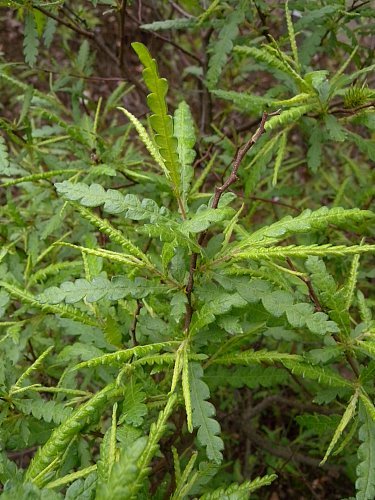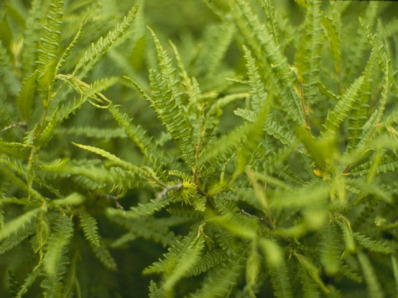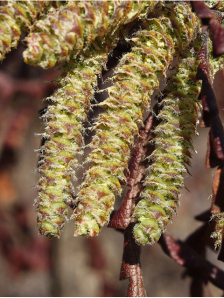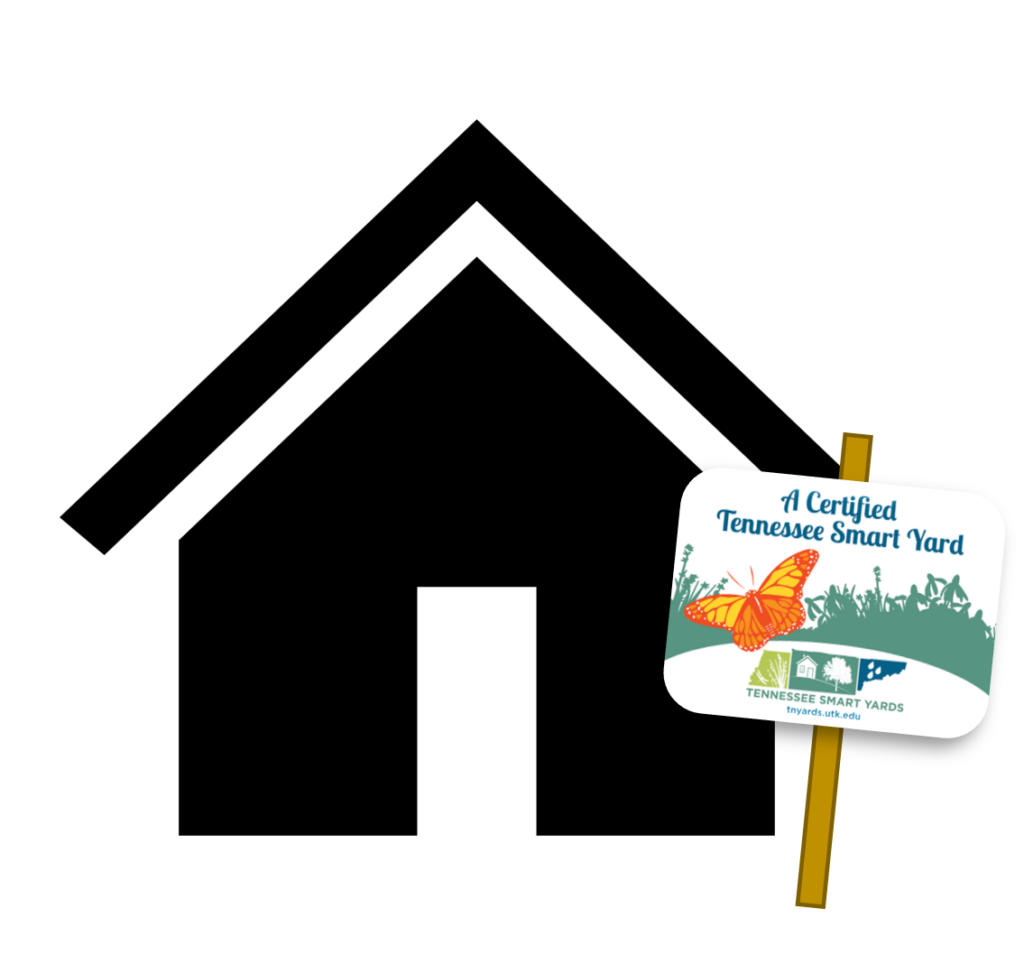
Common Name: Sweet Fern
Full to part sun; medium to moderately dry moisture level; best in peaty or sandy loams but also does well in poor infertile soils (but not clay); acidic pH.
2-5 feet height by 4-8 feet spread; inconspicuous yellowish green flowers; blooms spring into summer; seeds are olive-brown nutlets, 1/5 inch long, in clusters in fall.
Growth Rate: Slow to medium. Suckers profusely by underground rhizomes.
Maintenance: Low. No serious insect or disease problems.
Propagation: Very difficult by seed. Root cuttings are principal means and must be taken from juvenile stems.
Native Region: Only in Scott County
Designated an “Endangered Species” in Tennessee. A small, mound-shaped shrub that can form dense colonies. Member of the wax-myrtle or bayberry family. What it lacks in flowers, it makes up for with its sweet, citrusy scented leaves and the fern-like foliage which gives it a woodsy appearance. Dried leaves are used for potpourri and tea. Good garden shrub but is difficult to propagate, and balled & burlapped plants often do not survive. Container grown plants are easier to work with, and planting more than one will help insure survival. Pruning rarely needed due to its fairly slow growth rate.
Adaptable plant which tolerates both wet conditions and drought. Because it can fix its own nitrogen, it does well in poor infertile soils including gravelly soils. Although it tolerates less than full sun, it will be smaller in partial shade. Native to hillsides, cliffs, dry open woods, roadsides, and sandy barrens. Ideal for erosion control on dry sandy banks, sand dunes, along roads or under power lines. Attracts birds and butterflies. Larval host to the Grey Hairstreak butterfly.


